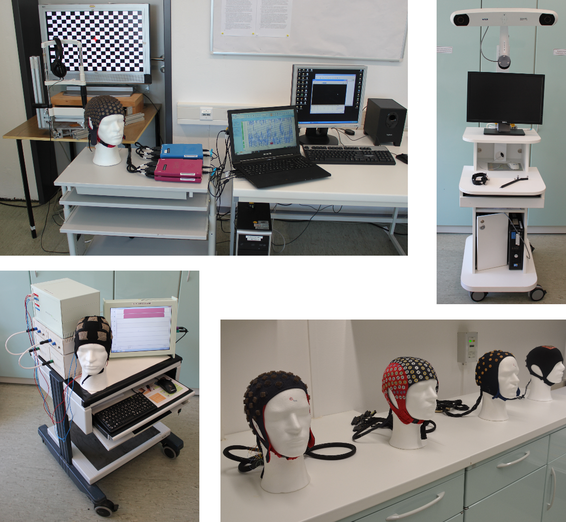Cap-based multichannel-EEG-systems (ANT Neuro)
- 64 / 128 / 256 - channel dry and wet Waveguard EEG caps
- 64 / 128 / 256 - channel eego amplifiers
- 256-channel TMSI amplifier
Single electrode based EEG-System (neuroConn)
- 32-channel NeuroPrax
- Trigger modules
Eevoke stimulation system
- Visual (LCD, LED)
- Auditory
Constant current stimulators
- DC Stimulator Plus (neuroConn)
- DC Stimulator MC (neuroConn)
- DS 7A (Digitimer)
- DS 5 (Digitimer)
Impedanz spectrographs
- Reference 600 Plus (Gamry)
- Agilent 4192A (Hewlett Packard)
Digitizing systems
- Xensor 3D electrode digitization (ANT Neuro)
- 3D structured light scanner (Scan in a Box)






